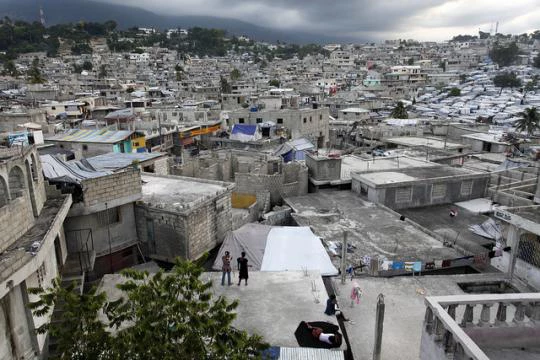
Delmas 32 is a tangled web of narrow alleys, defined by haphazard housing and makeshift structures. This community has been digging its way out of the 2010 earthquake, slowly but surely, and large piles of sand, rubble, bricks, and rebar pushing to the sky are a constant reminder of the work that remains.
In this community of 90,000, The World Bank and J/P Haitian Relief Organization (J/P HRO) are partnering on a project in collaboration with the Government of Haiti known as PREKAD, or Reconstruction Project for Disadvantaged Areas. This includes the relocation of 4,275 earthquake-displaced families and the construction of 45 housing units.
In rebuilding Delmas 32, we see an opportunity to demonstrate that something fundamentally different can come from a slum in the center of one of the world’s poorest cities: sustainable and prosperous communities. For this project, the solution we came up with was multi-story buildings, for group housing, that would be shared between different owners.
This co-property approach makes sense for the Haiti context. It’s one way to tackle a number of problems at once: high population density, the lack of land adequate records or documentation of ownership and the temporary shelters, which only further complicate an existing, intractable dilemma.
Co-property offers a number of advantages:
- For urban planning, it allows for restructuring the area by grouping people together to re-create accessibility and public space; it eases the development of infrastructure; and controls haphazard growth and expansion that engenders infrastructure problems.
- For public safety, it allows for para-seismic construction of buildings based on simple, straightforward design.
- For vulnerable local residents it is an inclusive process, where everyone can exchange their small piece of land for structurally sound, long-term housing.
- For addressing land-tenure issues, it allows families that have occupied land illegally for more than 20 years to legalize their land claim through a formal process known as “fermage de l’état”
We selected the area based on a global urban plan, which takes a holistic and integrated view on a neighborhood scale. We specifically wanted to avoid sites that were vulnerable to landslide or flooding risks.
For our entire team—which includes community agents in the field, alongside an architect, engineers and urban planner—the project has been a learning process and not always as easy as it would seem. Here are a few key important lessons I’ve learned:
- You shouldn’t engage in such a project unprepared.
- Community support is the most vital asset and public opinion and perceptions are key.
- Establish a committee in order to forge a link with the residents and create clear communication channels.
- Coordinate a neighborhood walk-through, or “marche exploratoire” to help residents identify main access points and security issues.
- Raise community awareness of the risks of reconstructing using unsafe construction methods
- Be prepared to explain the concepts, with models, pictures, whatever it takes. Again and again.
- Remember that bringing neighbors under one roof can also touch on community sensitivities.
- Be prepared for surprises.
Roughly translated, this means: “It’s a nice idea, but it won’t happen, Haitians don’t know how to live together.” I can only surmise this perhaps reflects how Haiti’s turbulent history has impacted the outlook of living together harmoniously.
So how do we move forward? How do we successfully forge agreements between 45 different families? How do we counter this shared conviction, while these are workable solutions, they cannot be for them? More meetings, explanations, discussions, and conversations. Many times, over and over.
Finally, we make progress. Nearly all the residents have signed contracts. Yet we still have much work to do. We must design this project to ensure a positive impact within the community structure, while finding diverse solutions to suit different family needs. We must also ensure that the space is structured so that it can be better integrated into the city.
But before everything, there must be a consensus within the community: This is an important step forward, and yes, it is possible!


Join the Conversation